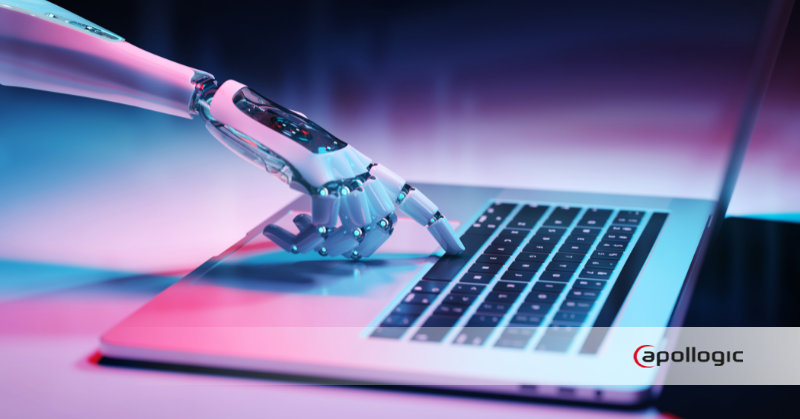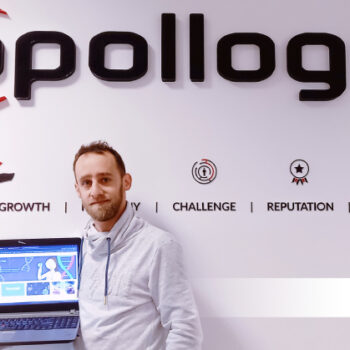Common business challenges of moving to the cloud and how to overcome them

Igor Szlegel, SAP CX Consultant
- 27th January 2022
- Technologies of tomorrow
- 4 min

In business, fortune favors the bold, those who notice new opportunities earlier and those who can quickly adapt to the changing market situation. In each case, we deal with a kind of change that entails the modernization of our IT systems. In the article below, we will discuss the following issues:
- Does the future lie in the cloud and why do we need cloud solutions?
- Implementing business solutions in the past and today
- Types of extensions and modifications of our systems’ functionality
From a business perspective, we can distinguish two aspects that lead us to adapt our systems by modifying or implementing new features. The first one arising from the “invest to save” approach entails reducing costs by increasing process efficiency. In this case, we need to simplify and automate our business processes. The second one, following “let’s invest to earn more” principle, implies the need to change the operating model or implement new functionality. In both cases, we need to make changes in the operation of our IT systems.
Extending functionality – then and now
Implementing modifications, including adding new features within our core system, has been a fairly common practice in the past. While it was initially a convenient form, multiple negative consequences appeared over time, particularly difficulties in the current system update. Each update required testing the previously implemented modifications, which ultimately resulted in the system update being abandoned and the inability to use the functionality of newer system versions.
Ultimately, our system was becoming more and more technologically backward. Unused already implemented modifications and extensions were not being retired, making our main system more and more “cluttered”. Meanwhile, the growing number of extensions built within the core system made the implementation of new functionalities slower and more time-consuming, causing a snowball effect.
In summary, our core system was becoming less efficient and technologically outdated. Maintaining the system was becoming more difficult, and making changes and adding new features took longer and cost more.
To avoid past mistakes, we should change our approach to implementing modifications in our systems. In short, these changes need to be deployed in dedicated environments, keeping our main system as “clean” as possible by following the “keep the core clean” rule. However, this is not a complete step away from affecting the central system.
Modifications or functional extensions, which come down to changes in the system configuration or launching built-in functionalities – so-called In-App Extensibility – should continue to be implemented as part of our main system.
The main benefits of this approach are:
✓ The ability to use the latest tech solutions and build extensions in a specialized environment and technology in which we are proficient – for example, in a software language of our choice, not just ABAP or Java,
✓ The possibility of using ready-made SaaS services, e.g. for robotization, application integration, or to store and process data, which we will be able to get from various systems, both on-premise and in the cloud,
✓ Reduced time required to implement extensions and greater flexibility,
✓ The ability to use available tools without the need to provide infrastructure, perform installations, care for high availability and its maintenance, which allow us to focus on meeting the business needs,
✓ The possibility to build an extension in a dedicated environment, we don’t “clog up” our core system, making it run more efficiently, and we’re able to keep it updated, which in turn enables us to take advantage of emerging technological innovations,
✓ The fact that we only pay as much as we use within a given license, and we get a scalable environment that can be deactivated when we no longer need specific features, which saves costs.
Cloud computing benefits today's businesses in many ways
Major challenges of building digital solutions
As it happens in life, there will also be cases where, for some reason, we choose the path of building a solution within the main system. We don’t completely rule out such a possibility. Still, it is worth emphasizing that the decision to choose the place to build the extension should be made consciously, bearing in mind the short-term benefits and the long-term consequences of such action.
We are often asked whether we should build business solutions outside our main system in every situation, especially when the extensions require access to a large volume of data processed in our main system. Is it worth copying data and how long will it take? In such cases, you should make a well-thought-out decision. Perhaps the analysis will show that it’s better to modify the main system. Usually, however, modern SAP cloud solutions allow you to replicate selected data to the cloud in real-time without overloading production and make that data available for extensions you build.
This solution will also work well if there is a need to build quickly another cloud solution using this data. Then we’ll be in a winning position, immediately deploying new extensions that give us a business advantage. It’s not worth taking shortcuts. It’s worth being flexible and prepared for new challenges.
Do you need support in setting a well-thought-out cloud strategy?
- On 27/01/2022










0 Comments